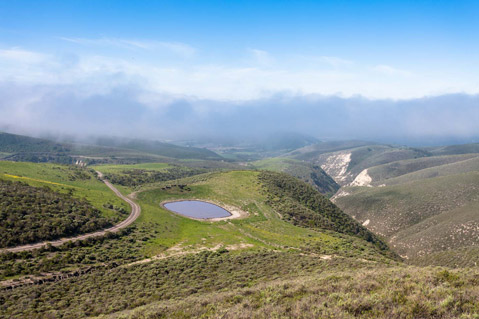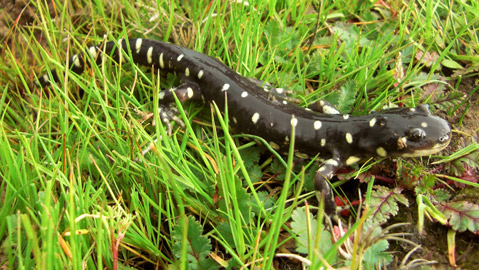County’s First Land Bank Opens
Preservation Play Good for Environment and Business?

In a handshake between endangered salamanders and free-market capitalism, the Land Trust for Santa Barbara County has helped usher in a new model of environmental protection with the area’s first land bank. The preservation play is saddled on 853 acres of grasslands and oak woodlands in the Purisima Hills between Los Alamos and Lompoc, and La Purisima Conservation Bank is described by its proponents as a win-win-win for developers, private landowners, and conservationists.
Opened for business in March and approved and overseen by the California Department of Fish and Wildlife, the La Purisima bank offers a different way for projects in the county to reduce their impacts on areas inhabited by endangered California tiger salamanders. Concerns over the survival of the vulnerable amphibian have delayed and stifled a number of energy, housing, and public-works pursuits over the years throughout Santa Barbara, particularly in North County.
Traditionally, project leaders are ordered by Fish and Wildlife to take mitigation measures on-site, which may mean shifting structures or relocating salamander breeding ponds. Now, qualifying developers can buy credits from the land bank at prices based on demand, availability, and other factors that dictate the open market. “It totally takes the government out of it,” noted Bruce Reitherman with the Land Trust. “We’re not reinventing the wheel, but it’s the first time this has been done in the county. It won’t end the controversy with tiger salamanders and development, but it provides some light in an otherwise stormy environment.”

The land bank sits within 2,800 acres of prime salamander habitat that is also used for cattle grazing. While the two species aren’t naturally compatible, they’ve learned to share the property’s man-made pools that cows drink from and salamanders breed in. The real beauty of the land bank, said Reitherman, is that it provides a contiguous swath of land to protect and preserve the species as opposed to multiple little islands of mitigation. “It allows you to consolidate and put your resources in one area,” Reitherman explained. The bank is also offering credits for the western spadefoot toad and is working on possible sales for the red-legged frog.
In early 2012, investor Brian Sweeney and a group of limited partners under the name Rancho Purisima LLC purchased the 2,800 acres from Harry Knill and a few other landowners for an undisclosed price. The full expanse was recorded as a conservation easement and put under permanent control of the Land Trust, and the group of buyers then started working with the Sausalito-based Conservation Land Group to get 853 acres of that ranching property certified as a land bank with approximately 750 credits. The acre-credit ratio is usually 1 to 1, but some of the acres are too steep for salamanders or were used for agriculture and need to be restored. County staff and the Department of Fish and Wildlife determine how many credits a project needs based on its size and ecological footprint.
The groups had to come up with a long-term management plan of the property, and the associated costs are funded through a multimillion-dollar endowment from the investors. Debra Geiler with Conservation Land Group said the total investment is more than $8 million and that while a healthy profit is of course desirable, it’s not the only consideration. “I think the hope is that when you start off on a project like this, you make a good return,” she explained, “but you can’t just be a business person. You also have to be interested in conservation.”
Geiler predicts it will take 5-10 years to sell all the credits, noting the La Purisima bank has already sold 69 to the City of Santa Maria for its Union Valley Parkway project. The bank is also in talks with Caltrans and a planned expansion of Highway 246. There are 61 other conservation banks approved throughout California; 12 are pending approval, and 11 are sold out. Around the country, 23 other conservation banks exist in various stages of approval and sales.
Even when La Purisima bank runs out of credits, the Land Trust and its protections will “still be here for the long haul,” said Reitherman. “We’re happy to see landowners and development interests use this financial instrument, but that’s not our business,” he said. “The Land Trust will hold on forever.”



